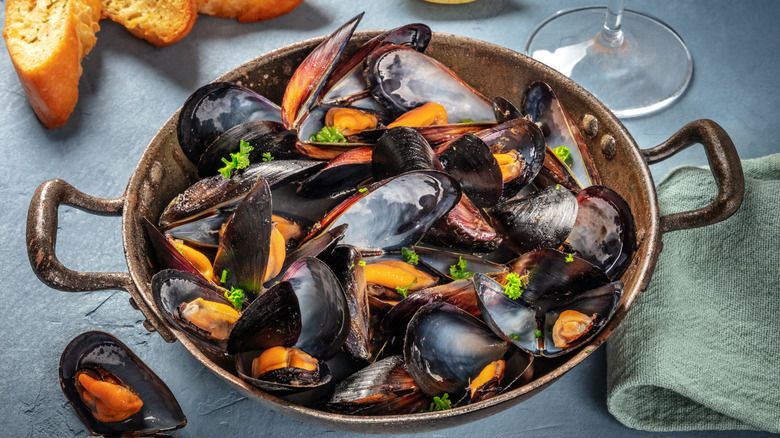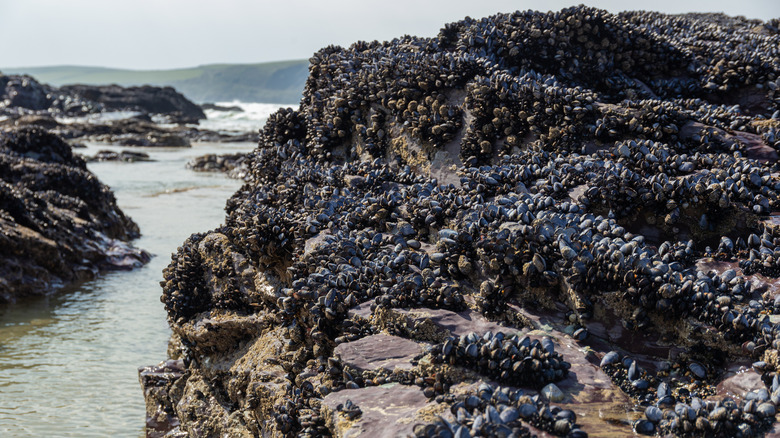The Real Reason Shellfish-Related Food Poisoning Has Sharply Increased
A platter of fresh oysters on the half shell or a bowl of steamed mussels are some tasty seafood delights that many of us enjoy. Unfortunately, shellfish-based dishes might soon start to become increasingly rare as climate change makes an impact, according to Mandatory. Most recently, the Washington State Department of Health (DOH) noted a surge in cases of vibriosis in the month of July. The DOH explained that the vibrio bacteria is transmitted when people consume raw or undercooked contaminated shellfish. While the DOH counted only five cases of the intestinal disease in July 2020, 52 cases have been reported this month (via Eater).
The DOH believes that a combination of the heatwave that hit the Pacific Northwest at the end of June, as well as low tides helped the bacteria thrive in the shellfish population. More specifically, low tides coincided with the middle of the day when the sun shines strongly (via DOH). While shellfish are regularly exposed to low tides and can endure some time under the sun, they ended up baking in the sun when temperatures remained above 100-degrees F in the peak of the day at low tide, according to Gizmodo.
Will the situation ever get better?
Marine biologist Chris Harley at the University of British Columbia tells the CBC that somewhere around one billion sea creatures died during the heatwave. Not only are beaches scattered with dead shellfish, but the consequent effects are equally disastrous. Brian Helmuth, another marine biologist, explained to CNN that dying mussels initiates a chain reaction of marine devastation. He compares mussel beds to coral reefs, noting that they hold a large variety of sea life.
Furthermore, Mandatory points out that mussels are filter feeders and assist in maintaining ideal conditions for sea life by cleaning around six gallons of seawater a day. With such a shortage of mussels and shellfish after the heatwave, it follows that the quality of water likely deteriorated. Researcher Timothy Green tells the Times Colonist that warming ocean water adds to the likelihood of bacteria and pathogen growth in shellfish. Unfortunately, shellfish farmers do not foresee the situation improving, and are looking to alternate options to help maintain the natural ecosystems. Eater indicates that some shellfish companies in the Pacific Northwest are even considering breeding shellfish that can thrive in the warming conditions.
If you plan to continue consuming shellfish, the DOH recommends following the Three Cs to avoid vibriosis. Shellfish should be cooked for at least 15 seconds at minimum 145-degrees F, it should be kept chilled on ice until cooking, and people who collect their own shellfish should check the DOH's safety map to avoid risky zones.

